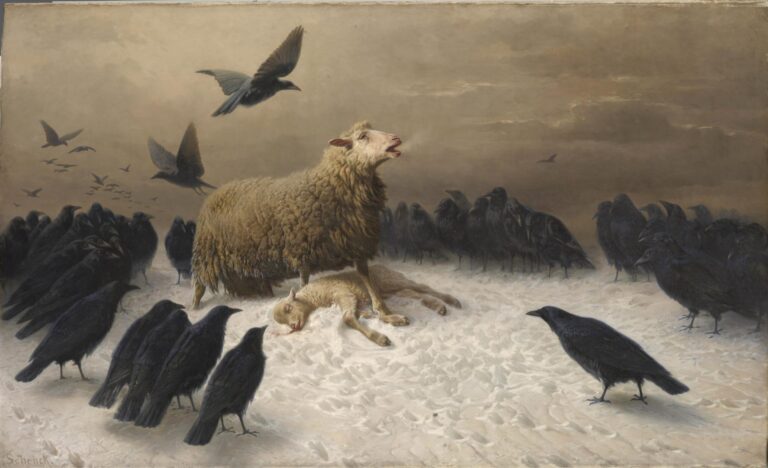Ludmilla Petrushevskaya’s Scary Fairy Tales

Ludmilla Petrushevskaya is a Russian writer whose name often appears on lists of possible winners for the Nobel Prize in Literature. Like Anton Chekhov, her literary output consists of plays, short stories, and a few novellas, yet, also like Chekhov, she makes short fiction feel expansive, capable of encapsulating all of life. Though she began writing in the 1970s, her work, including the bleak stories about Soviet and post-Soviet life for which she is best known, only began to appear in the late 1980s. She was censored not for any overt political content but for her general aesthetic, which was seen as simply too despairing for socialist realism; Aleksandr Solzhenitsyn was allowed to publish tales about the gulag before Petrushevskaya saw many of her short, informal dark fables of daily life in print. Petrushevskay’s own family was suppressed in the 1930s as “enemies of the people,” and she and her mother lived for part of her childhood with her grandfather, sleeping under a desk in the corner of his room; many of her stories reveal the grotesque distortions in family life that result from poverty, alcoholism, and an ever-present housing shortage.
In English, Petrushevskaya’s best-known stories have appeared in There Once Lived a Woman Who Tried to Kill Her Neighbor’s Baby: Scary Fairy Tales, selected and translated by Keith Gessen and Anna Summers (2009), and There Once Lived a Girl Who Seduced Her Sister’s Husband, and He Hanged Himself: Love Stories, selected and translated by Anna Summers (2013). The first volume became a bestseller when it appeared—these “scary fairy tales” have perhaps resonated with English speakers because they tend toward allegory, relying less on an understanding of the context of late-Soviet life than most of Petrushevskaya’s more realist stories. The scary fairy tales in There Once Lived a Woman Who Tried to Kill Her Neighbor’s Baby, like all fairy tales, tap into the unconscious fears we have about family relations—particularly the relationship between parents and children. In these stories, mothers often struggle to protect their children against the malice and indifference of a harsh reality. Only sometimes are they successful.
In “Revenge,” the story that gives the English version its title, two women, Zina and Raya, live in rooms next to one another in a communal apartment. Although they used to be friends, when Zina becomes pregnant, Raya finds herself “consumed with hatred.” After Zina gives birth to a baby girl, Raya begins to plan for the child’s death. She leaves pots of bleach, buckets of boiling water, and sewing needles out in the hallway for the crawling child to come across. Forced to leave the girl at home while she works, Zina begins to lock her in the room rather than ask her neighbor to watch her. One day Raya hears a thump and cries from behind the locked door. Thinking the baby has fallen out of its crib, she scrubs the hallway with bleach and purposefully tries to push some under the door. A couple days later, Zina confirms that the child has died. Raya, who suffers from a painful joint disorder, soon becomes ill, and Zina is the only neighbor who helps care for her. When Raya asks Zina to obtain morphine for her so that she can end her life, Zina refuses, but she watches as Raya swallows a bottle of pills she has on hand. Zina waits until the other woman is near death and then tells her, “‘My little girl is alive and well. She lives at preschool, and I work there as a cleaning lady. The stuff you spilled under the door wasn’t bleach—it was baking soda. I switched the cans . . . . So it’s not your fault. Nothing is your fault. But neither is anything my fault. We’re even.’” Upon hearing this revelation, the dying woman smiles.
As in a fairy tale, Petrushevskaya spends little time examining her characters’ motivations or inner life, focusing instead on narrating the outer events of the story. The cause of Raya’s hatred toward Zina and the new baby is never explicitly stated, though Raya hallucinates “a man’s voice coming from Zina’s room,” and the reader is left to intuit that Raya envies her former friend. We’re also left to puzzle through Raya’s reaction at the end of the story: does she have a change of heart after she believes she has succeeded in killing the child or is she simply relieved to be told she doesn’t need to have anything to weigh on her conscience as she approaches death? Whatever the explanation, the reader understands that Zina has played a role in Raya’s death similar to the one that Raya attempted with the baby—she sets up the circumstances and sits by passively as they play out. What would otherwise be an unbearably bleak tale is redeemed by the mother’s ingenuity in keeping her child alive and the love that the act implies. Here, a mother’s fear for the safety of her child manifests in the form of the jealous neighbor, but the mother proves herself to be a worthy adversary.
In “Hygiene” —a particularly harrowing story to read amidst the current pandemic—a young man knocks on the door of a family’s apartment. The household consists of married couple Nikolai and Elena, their young daughter, and Elena’s parents. The young man has “a bald scalp covered with the thinnest layer of pink skin, like the foam atop boiling milk.” He informs them that there is a disease in the city that kills people within three days. In order to avoid the illness, they must practice good hygiene and avoid mice, which are known to be purveyors of the disease. The young man has survived the illness and is now immune, and is offering to bring provisions to those in quarantine. The adults refuse the man’s help, believing that he is trying to cheat them out of their money, but within a couple hours they learn that he was telling the truth. They are reduced to rationing their food supplies, and Nikolai makes nightly excursions in search of provisions, after which he throws away his clothes and douses himself in cologne as a disinfectant. While Elena foregoes her own rations so that her daughter can eat, the little girl gives away half of all her food to her beloved pet cat. When the cat appears with its mouth smeared with blood after killing a mouse, the grandparents and Nikolai panic and lock the girl and the cat in her room. They are also “forced” to lock Elena in the bathroom. The narrator dispassionately narrates the child’s abuse:
Nikolai managed to hack an opening high up in the door. He lowered a bottle filled with soup and bread crumbs through the hole. The girl was told to eat this for dinner and then to urinate in the bowl and pour it out the window. But the window was locked at the top, and the girl couldn’t reach, and the bottle turned out to be too narrow for her to aim into. Excrement should have been easy enough: she was to take a few pages from one of the books and go on those, and then throw this all out the window . . . But the girl soon showed signs of her spoiled upbringing. She was unable to defecate onto the pages as she was supposed to. She couldn’t keep track of her own needs.
Soon enough, despite the family’s efforts, the cat escapes from the room and spreads the disease throughout the apartment. When the young man returns to check on the family six days after his first visit, he finds the four bloated corpses of the adults, a healthy cat, and the little girl sitting on her bed “with a bright red scalp, just like the young man’s, only redder.”
Although Elena apparently resists the rest of the family’s efforts to isolate her child, in this case she is unsuccessful at protecting her from the other relatives’ cruelty. Yet by chance, or fate, the child becomes the sole survivor. “Hygiene” reads like an allegory in which the adults suffer for their selfishness while the innocent young child miraculously survives. We understand the young man, the only other survivor, will probably take the girl under his wing, perhaps enlisting her in his efforts to help others. In this instance, a person who has already proven himself willing to care for others appears ready to step in as a surrogate parent.
Petrushevskaya’s attitude toward motherhood is perhaps most salient in her best-known story, “The New Robinson Crusoes.” The story is narrated by an eighteen-year-old girl who has fled to the country with her parents following some unspecified cataclysmic event. The family’s safety depends on their ability to isolate themselves and survive off the land. They flee to a small village where there are only three old women left, including Baba Anisya, with whom they initially trade potatoes in exchange for goat milk; Baba Anisya quickly becomes essential to their survival, teaching them how to forage in the woods for mushrooms and plant their crops. When the mother reluctantly takes in a very young girl who’s suffered at the hands of an alcoholic grandmother, the father takes off into the woods, in protest at this new mouth to feed. Soon the family is tasked with yet another dependent when a baby boy is left on their doorstep. Eventually the father warms to both the children, and through his ingenuity and the women’s industry, they all move, along with Baba Anisya, to a shelter deeper in the forest where they hope to be safe—for a time.
The narrator sums up their situation at the end of the story in almost Edenic terms. They have returned to a subsistence-level existence, but as in many dystopian works, the implication is that in losing a level of material prosperity they have returned to what is really essential:
We had mushrooms, berries (dried and boiled), potatoes from my father’s plot, a whole attic filled with hay, pickled apples from abandoned gardens in the forest, even a few cans of pickled cucumbers and tomatoes . . . We had our goats. We had a boy and a girl, for the continuation of the race, and a cat, who brought us mice from the forest, and a dog, Red . . . We had a grandmother— the storehouse of the people’s wisdom and knowledge.
While the family in “Hygiene” seeks to isolate themselves from one another in a vain attempt to survive, here the family comes together to work for the general good and increase their chances for mutual survival. They also take in children who are too young to be more than a burden at the present moment. Baba Anisya “remained useful for a long time to come,” but even she eventually surrenders to old age and lies down next to the stove, getting up only to use the outhouse. In “The New Robinson Crusoes,” caring for the weak becomes a moral imperative, a way of preserving human civilization under the most extreme circumstances.
In much of her work, Petrushevskaya is willing to plumb the depths of human cruelty, yet a certain morality surfaces again and again in her work. Grown children may scheme and plot ways to turn their older parents out of coveted apartments, but mothers tend to remain true to their children. Even when birth parents fail, other surrogates will often appear to care for children and nurture the future generation. Like the best fairy tales, these stories contain their own dark wisdom.
This piece was originally published on December 7, 2020.


